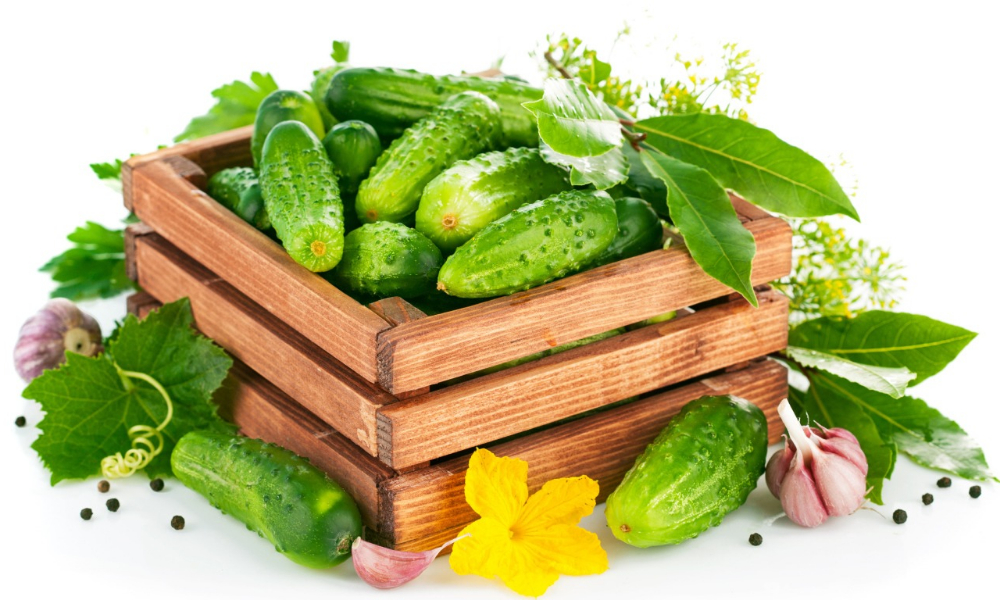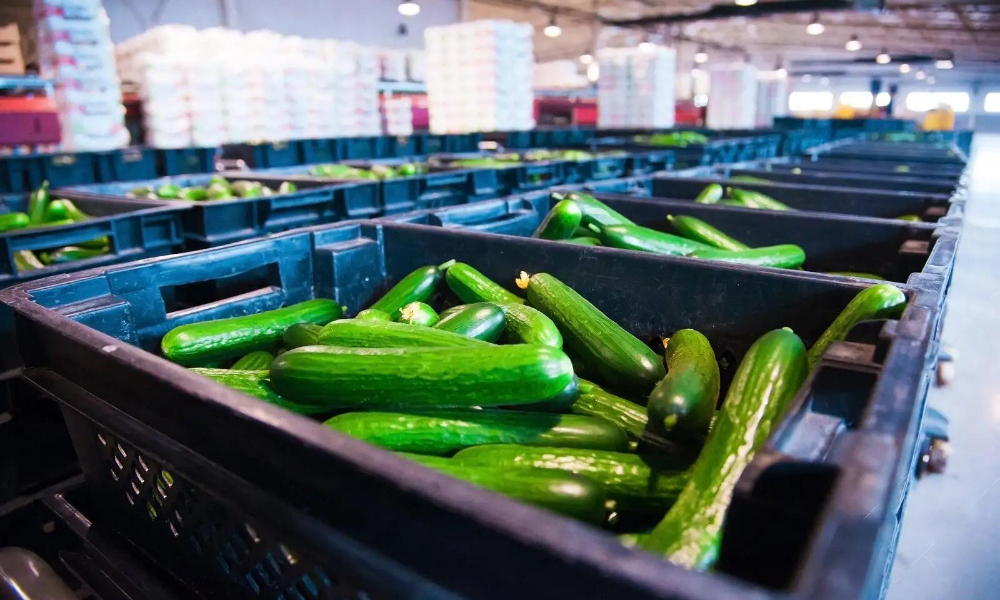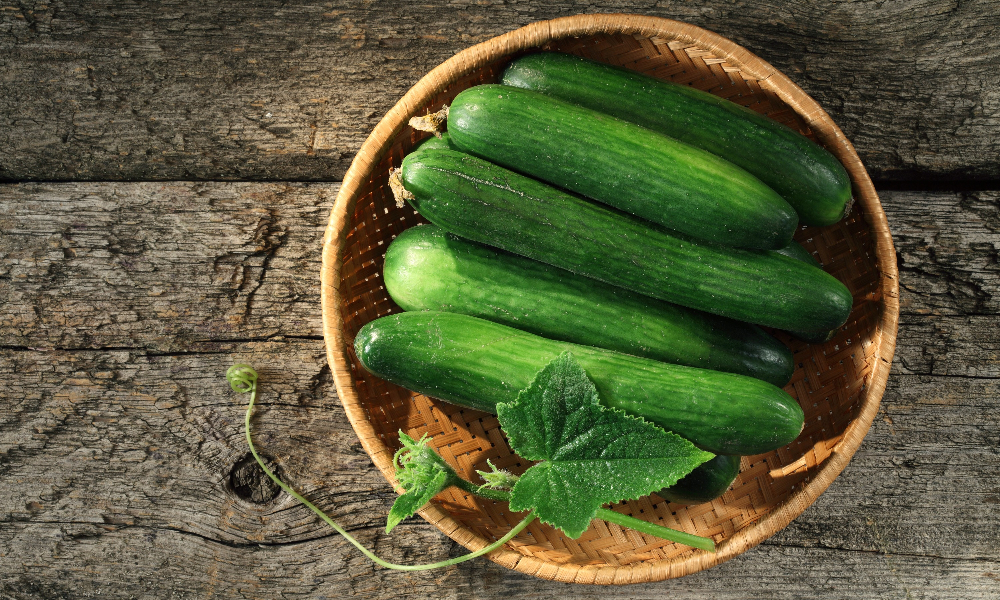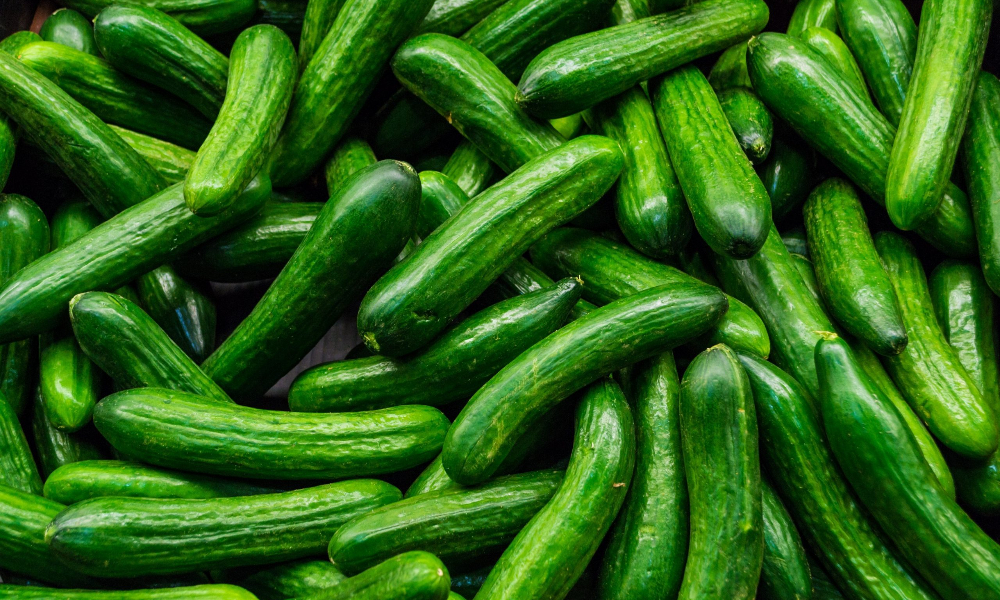Characteristics of Cucumber Storage Cold Rooms
Cucumbers, compared to many fruits and vegetables, have unique storage characteristics that require more precision and care during cold storage. The first significant difference is the cucumber's higher sensitivity to low temperatures. The optimal temperature for storing cucumbers is 10-12°C, whereas some fruits can be stored at lower temperatures. Additionally, cucumbers require high relative humidity (95-100%) to maintain freshness and quality, whereas other products can be stored at lower humidity levels. Furthermore, cucumbers produce respiratory gases like carbon dioxide during storage, which must be appropriately vented, a consideration not as critical for many other fruits and vegetables. Lastly, the storage period for cucumbers in cold storage is typically 10-14 days, relatively shorter than some other products. Therefore, due to these unique characteristics of cucumbers, their cold storage process requires more attention and care.
In the food storage and distribution industry, specialized cold rooms for storing cucumbers are particularly important. These cold rooms need specific specifications and requirements due to the unique characteristics of cucumbers, distinguishing them from regular cold rooms.
Suitable Temperature and Humidity for Cucumber Storage
Cucumbers require a lower temperature than most fruits and vegetables. The suitable temperature for storing cucumbers is usually between 7 to 10°C. This lower temperature helps delay the aging and spoilage process of cucumbers. Temperatures significantly lower than this range may cause cold damage to the cucumbers. Conversely, temperatures higher than this range will increase the respiration rate and aging of the product. Therefore, precise temperature control within this range is crucial.
Cucumbers need high relative humidity (90 to 95%) to retain freshness and prevent wilting. This level of humidity might not be suitable for other food products and could cause issues. Lower relative humidity than this range causes cucumbers to dry out and lose quality. Higher humidity can promote mold and bacteria growth, leading to spoilage. Therefore, maintaining relative humidity within the appropriate range is highly important.
Airflow
Cucumber cold rooms require proper airflow to ensure even distribution of temperature and humidity throughout the chamber. This airflow might be harmful to other sensitive products like fruits and vegetables. Excessive airflow causes faster moisture evaporation and drying of the product, while weak airflow creates areas with different temperatures and humidity in the cold room, disrupting uniform conditions. Therefore, the airflow system should be designed to create uniform and suitable environmental conditions throughout the chamber.
Packaging
Cucumber packaging in cold storage should prevent damage to the cucumbers while allowing airflow and gas exchange among them. These conditions are crucial for maintaining cucumber quality during cold storage. For this purpose, perforated or mesh plastic packaging, breathable plastic film packaging, perforated cardboard boxes, and perforated polyethylene bags are suitable.
The packaging should allow gas exchange (oxygen and carbon dioxide) and prevent moisture accumulation. This packaging feature is essential for optimal cucumber storage. Non-permeable packaging and low-permeability packaging reduce respiration rate and moisture accumulation around the product, damaging cucumber quality. Suitable packaging should enable proper gas exchange and prevent excess moisture accumulation.
For cold storage packaging, various types of packaging are suitable:
- Perforated or mesh plastic boxes allow airflow among cucumbers, reducing the risk of rotting and damage.
- Breathable plastic film packaging covers cucumbers in small packages with plastic film that allows breathing and gas exchange.
- Perforated cardboard boxes can also be suitable for cucumber packaging.
Ethylene Management as a Special Feature
Cucumbers are highly sensitive to ethylene, and the level of this gas in the cold room should be carefully controlled to prevent premature aging. Ethylene is a hormone that accelerates aging in many fruits and vegetables. The presence of ethylene in the cold room environment increases the aging and spoilage rate of the product. Therefore, the absorption or removal of this gas should be precisely done to provide suitable conditions for cucumber storage.
Storage Period in Cold Storage
Typically, cucumbers have a shorter storage period in cold storage compared to other products, lasting a maximum of 2 to 3 weeks. Cucumbers are very sensitive and perishable, and their cold storage period is limited. Many environmental factors like temperature, humidity, airflow, and ethylene levels affect the aging and spoilage rate. Therefore, cucumbers cannot be stored in cold rooms for long periods and should be consumed as soon as possible. Thus, designing and managing cucumber-specific cold rooms with consideration of their unique characteristics is essential to maintain the quality and freshness of this sensitive product throughout the supply chain.
Types of Cucumbers and Their Differences in Cold Storage
Regarding the types of cucumbers and their differences in cold storage, there are ordinary cucumbers (diet cucumbers), bitter cucumbers, edible cucumbers, and small cucumbers (pickle cucumbers).
Ordinary cucumbers (diet cucumbers) have thin skin and firm, sweet flesh. Due to their thin skin, they are easily vulnerable and require more care in packaging and handling. The optimal storage conditions for ordinary cucumbers in cold storage are 8-10°C and 90-95% relative humidity, allowing them to be stored for 10-12 days.
Bitter cucumbers (Turkish cucumbers) are less popular due to their bitter and slightly sour taste. The optimal storage conditions for these cucumbers in cold storage are 7-9°C and 90-95% relative humidity, allowing them to be stored for 10-12 days. Additionally, the skin of these cucumbers is usually slightly thicker than ordinary cucumbers.
Edible cucumbers are larger than other cucumbers and are typically used in cooked dishes. They can be stored at 5-7°C and 90-95% relative humidity for 12-15 days in cold storage.
Small cucumbers (pickle cucumbers) are smaller than other types and are usually used in pickles and stews. The optimal storage conditions for these cucumbers in cold storage are 8-10°C and 90-95% relative humidity, allowing them to be stored for 7-10 days.
Overall, although all types of cucumbers need similar conditions for cold storage, their optimal storage conditions can vary due to differences in size, texture, and other characteristics. Accurate assessment and adjustment of these conditions can help maintain the quality and shelf life of each type of cucumber.
Volume and Weight Ratio of Cucumbers in Cold Storage
Cucumbers typically have a specific weight of about 0.4-0.45 kg per liter. The arrangement and packaging of cucumbers in cold storage directly impact the filling factor. If cucumbers are arranged in suitable cartons and in multiple layers, the filling factor will be about 60-70%. However, if they are arranged loosely without packaging, the filling factor can reach 85-90%. Therefore, in a cubic meter of cold storage, about 180-250 kg of cucumbers can be stored in packaged form, and about 300-350 kg in loose form.





